VMIC VMIVME-7807
Specifications
CPU
Intel Pentium M
DRAM Memory
DDR SDRAM
Ethernet Controller
Intel 82551ER
Processor
Intel Pentium M
Super VGA Controller
Intel 855GME Chipset internal graphics controller
Features
- 32 Kbyte of nonvolatile SRAM
- 400 MHz system bus via Intel 855GME chipset
- Available with either the 1.1 GHz, 1.6 GHz or 1.8 GHz Pentium M processor
- Ethernet controller supporting 10BaseT and 100BaseTX through the front panel
- Four asynchronous 16550 compatible serial ports
- Four Universal Serial Bus (USB) Rev. 2.0 connections, two on the front panel and two rear I/O
- Gigabit Ethernet controller supporting 10BaseT, 100BaseTX and 1000BaseT interface with optional Vita 31.1 support
- Internal SVGA and DVI controller
- Operating system support for Windows XP, Windows 2000, VxWorks, QNX, LynxOS and Linux
- PMC expansion site (PCI-X, 66 MHz)
- Serial ATA support through P2 rear I/O
- Up to 1 Gbyte bootable CompactFlash on secondary IDE (see ordering options)
- Up to 1.5 Gbyte DDR SDRAM
- Up to 2 Mbyte of advanced L2 cache
Datasheet
Extracted Text
VMIVME-7807
® ®
Intel Pentium M-Based VME Single Board Computer
• Available with either the 1.1 GHz, 1.6 GHz or 1.8 GHz
®
Pentium M processor
Up to 2 Mbyte of advanced L2 cache
Up to 1.5 Gbyte DDR SDRAM
Up to 1 Gbyte bootable CompactFlash on secondary IDE (see
ordering options)
Internal SVGA and DVI controller
Serial ATA support through P2 rear I/O
®
400 MHz system bus via Intel 855GME chipset
Ethernet controller supporting 10BaseT and 100BaseTX
through the front panel
Gigabit Ethernet controller supporting 10BaseT, 100BaseTX
and 1000BaseT interface with optional Vita 31.1 support Ordering Options
Four asynchronous 16550 compatible serial ports
August 4, 2004 800-007807-000 B A B C D E F
Four Universal Serial Bus (USB) Rev. 2.0 connections, two on
VMIVME-7807 –
the front panel and two rear I/O
A = Processor
PMC expansion site (PCI-X, 66 MHz)
1 = Reserved
2 = 1.1 GHz Pentium M
32 Kbyte of nonvolatile SRAM
3 = 1.6 GHz Pentium M
®
Operating system support for Windows XP, Windows 2000,
4 = 1.8 GHz Pentium M
® ® ® ®
VxWorks , QNX , LynxOS and Linux
B = System DDR SDRAM
0 = Reserved
1 = 512 Mbyte
Functional Characteristics
2 = 1 Gbyte
3 = 1.5 Gbyte
Microprocessor: The VMIVME-7807 is based on the Pentium M
C = CompactFlash
0 = No CompactFlash
processor family. The enhanced 1.1 GHz and the 1.6 GHz Pentium M
1 = 128 Mbyte
2 = 256 Mbyte
processors have 1 Mbyte of L2 cache, while the 1.8 GHz Pentium M
3 = 512 Mbyte
processor has 2 Mbyte of L2 cache. The Pentium M processor family
4 = 1 Gbyte
D = Connector P0
offers thermal characteristics that are well suited for embedded
0 = No P0
systems operating over a wide range of temperatures. 1 = P0 Installed (with Gigabit Ethernet and VITA 31.1 support)
E = ECC Support
0 = No ECC
DRAM Memory: The VMIVME-7807 supports DDR SDRAM with the
1 = With ECC
optional ECC support for a maximum memory capacity of 1.5 Gbyte. The
F = Special Sales Order
0 = VME standard
SDRAM is dual ported to the VMEbus.
1 = 1101.10 front panel
VMEbus Rear Transition Utility Boards
BIOS: System and video BIOS are provided in reprogrammable flash
VMIACC-0586 and VMIACC-0590
memory.
The VMIACC-0586 and VMIACC-0590 install in the rear transition area of the
VMEbus backplane. The VMIACC-0586 and VMIACC-0590 are sold separately.
Ethernet Controller: The VMIVME-7807 provides a connection for
Note
All VME single board computer products come standard with a VME specification
10/100 Mbyte LAN using the Intel 82551ER Ethernet controller. One
compliant front panel.
standard RJ45 connector is provided on the front panel with network
For Ordering Information, Call:
1-800-322-3616 or 1-256-880-0444 • FAX (256) 882-0859
status indicators. The second Ethernet interface is the dual Gigabit
Email: info.embeddedsystems@gefanuc.com
Web Address: www.gefanuc.com/embedded
Ethernet (Intel 82546EB) with one routed to the front panel and the
Copyright © 2004 by VMIC
other to the backplane using the P2 connector. Both Gigabit Ethernets
Specifications subject to change without notice.
GE Fanuc Automation Americas, Inc. 12090 South Memorial Parkway, Huntsville, Alabama 35803-3308 1
VMIVME-7807
Watchdog Timer: The VMIVME-7807 provides a software-
can be routed through an optional P0 connector supporting VITA 31.1
programmable watchdog timer. The watchdog timer is enabled under
available via the VMEbus backplane.
software control. Once the watchdog timer is enabled, software must
Serial ATA: The VMIVME-7807 provides a serial ATA interface via the
access the timer within the specified timer period or a timeout will
VMEbus backplane connector.
occur. A user configurable switch allows the timeout to cause a reset.
Independent of the switch, software can enable the watchdog timer to
Super VGA Controller: High-resolution graphics and multimedia-
cause a nonmaskable interrupt (NMI) or a VMEbus SYSFAIL.
quality video are supported on the VMIVME-7807 using the 855GME
chipset internal graphics controller. Screen resolutions up to 1,600 x
Nonvolatile SRAM: The VMIVME-7807 provides 32 Kbyte of
1,200 true colors (single view mode) are supported by the graphics
nonvolatile SRAM. The contents of the SRAM are preserved when
adapter. The super VGA controller is accessible through the front panel.
power is interrupted or removed from the unit.
Digital Visual Interface (DVI): The VMIVME-7807 has a digital visual
PMC Expansion Site: The VMIVME-7807 has one IEEE 1386.1 PCI
interface that provides a high speed digital connection for visual data
mezzanine card (PMC) expansion site. This expansion capability allows
types that are display technology independent. DVI is a display interface
the addition of peripherals offered for PMC applications. The PMC site
developed in response to the proliferation of digital flat-panel displays.
is PCI-X, 66 MHz.
The DVI interface is available through the rear I/O.
GE Fanuc’s PMC237CM1/V Expander Card: The PMC237CM1/V
Remote Ethernet Booting: The VMIVME-7807 utilizes the Argon
expander card is a 6U form factor board that adds three PMC slots or
Manage Boot BIOS that provides the ability to remotely boot the
two PMC slots and one PCMCIA/CardBus socket.
VMIVME-7807 using PXE, NetWare, TCP/IP or RPL network protocols.
NOTE: The VMIVME-7807 will throttle back the PCI-X 66 MHz/64-bit
Remote Ethernet Features:
bus when using legacy 33MHz, 32-bit PMC cards.
PXE, NetWare, TCP/IP, RPL network protocol support
Universal Serial Bus (USB): The VMIVME-7807 provides four USB
Unparalleled boot sector virus protection
2.0 connections. Two of the USB ports are available on the front panel,
Detailed boot configuration screens
while the other two are routed to the rear I/O. High speed USB 2.0
Comprehensive diagnostics
allows data transfers of up to 480 Mbyte/s. This rate is 40 times faster
Optional disabling of local boots
than USB 1.0. USB 2.0 is backward compatible with USB 1.0.
Dual-boot option lets users select network or local booting
IDE Interface: The IDE interface on the VMIVME-7807 supports
Serial Ports: Four 16550-compatible serial ports are featured on the
ATA-33, ATA-66 and ATA-100 drives and automatically determines the
VMIVME-7807. COM1 is available through the front panel using an
proper operating mode based on the type of drive used. In order to
RJ45 connector. COM2, COM3 (TTL) and COM4 (TTL) are routed to the
properly function in the ATA-100 mode, a special 80-conductor cable
rear P2 I/O connector.
must be used instead of the standard 40-conductor cable. This cable is
typically available from the ATA-100 drive manufacturer.
Keyboard and Mouse Ports: The VMIVME-7807 has a combined PS/2
keyboard and mouse connector. A Y-adapter cable is included.
Thermal Management: The VMIVME-7807 utilizes a passive heat sink
that relies on forced air cooling within the equipment rack at the
Flash Memory: The VMIVME-7807 provides up to 1 Gbyte
specified flow rate. Please refer to the environmental specifications for
CompactFlash memory accessible through the secondary IDE port. The
more information.
VMIVME-7807 BIOS includes an option to allow the board to boot from
the Flash memory.
VMEbus Interface: The VMIVME-7807 VMEbus interface is based on
the Universe II high performance PCI-to-VMEbus interface from
Timers: The VMIVME-7807 provides the user with two 16-bit timers
Newbridge/Tundra.
and two 32-bit timers (in addition to system timers). These timers are
mapped in memory space, and are completely software programmable.
GE Fanuc Automation, Inc. 12090 South Memorial Parkway, Huntsville, Alabama 35803-3308 2
VMIVME-7807
System Controller: The VMEbus system controller capabilities allow The interrupt handler has a corresponding STATUS/ID register for each
the board to operate as a slot 1 controller, or it may be disabled when IRQ* interrupt. Once the handler receives an IRQ*, it requests the
another board is acting as the system controller. The system controller VMEbus and, once granted, it performs an IACK cycle for that level.
may be programmed to provide the following modes of arbitration: Once the IACK cycle is complete and the STATUS/ID is stored in the
corresponding ID register, an appropriate interrupt status bit is set in an
Round Robin (RRS)
internal status register and a PCI interrupt is generated. The PCI
Single Level (SGL)
interrupt can be mapped to PCI INTA# or SERR#.
Priority (PRI)
Interrupter: Interrupts can be issued under software control on any or
The system controller provides a SYSCLK driver, IACK* daisy-chain
all of the seven VMEbus interrupt lines (IRQ7* to IRQ1*). A common ID
driver, and a VMEbus access timeout timer. The system controller also
register is associated with all interrupt lines. During the interrupt
provides an arbitration timeout if BBSY* is not seen within a specified
acknowledge cycle, the interrupter issues the ID to the interrupt
period after a BGOUT* signal is issued. This period is programmable for
handler.
16 or 256 µs.
The interrupter can be programmed to generate a PCI INTA# or SERR#
VMEbus Requester: The microprocessor can request and gain control
interrupt when a VMEbus interrupt handler acknowledges a software-
of the bus using any of the VMEbus request lines (BR3* to BR0*) under
generated VMEbus interrupt.
software control. The requester can be programmed to operate in any of
the following modes: Byte Swapping: The Intel 80x86 family of processors uses little-endian
format. To accommodate other VMEbus modules that transfer data in
Release-On-Request (ROR)
big-endian format (such as the 680x0 processor family), the
Release-When-Done (RWD)
VMIVME-7807 incorporates byte-swapping hardware. This provides
VMEbus Capture and Hold (VCAP)
independent byte swapping for both the master and slave interfaces.
Mailboxes: The VMEbus interface provides four 32-bit mailboxes,
Both master and slave interface byte swapping are under software
which are accessible from both the microprocessor and the VMEbus
control.
providing interprocessor communication. The mailboxes have the ability
The VMIVME-7807 supports high throughput DMA transfers of bytes,
to interrupt the microprocessor when accessed by the VMEbus.
words and longwords in both master and slave configurations.
Interrupt Handler: The interrupt handler monitors, and can be
If endian conversion is not needed, we offer a special “bypass” mode
programmed to respond to any or all VMEbus IRQ* lines. All normal
that can be used to further enhance throughput. (Not available for byte
process VMEbus-related interrupts can be mapped to PCI INTA# or
transfers.)
SERR# interrupts. These include:
Master Interface: MA32:MBLT32:MBLT64
Mailbox interrupts
(A32:A24:A16:D32:D16:D8 (EO):BLT32)
VMEbus interrupts
VMEbus interrupter IACK cycle (acknowledgment of VMIVME-7807 The VMEbus master interface provides nine separate memory windows
VMEbus-issued interrupts) into VMEbus resources. Each window has separate configuration
registers for mapping PCI transfers to the VMEbus (that is, PCI base
All error processing VMEbus-related interrupts can be mapped to PCI
address, window size, VMEbus base address, VMEbus access type,
INTA# or SERR#. Note: PCI SERR# initiates an SBC NMI. These include:
VMEbus address/data size, etc.). The maximum/minimum window sizes
ACFAIL* interrupt
for the nine windows are as follows:
BERR* interrupt
SYSFAIL* interrupt
GE Fanuc Automation, Inc. 12090 South Memorial Parkway, Huntsville, Alabama 35803-3308 3
VMIVME-7807
VMISFT-9420 VMEbus Access™ for Windows XP/Windows 2000:
Window Minimum Size Maximum Size
The VMEbus Access product is specifically designed for accessing the
0, 4 4 Kbyte 4 Gbyte
advanced VMEbus Access architecture of the VMIVME-7807. Running
1 to 3, 5 to 7 64 Kbyte 4 Gbyte
on Windows XP/Windows 2000, VMEbus Access is both sophisticated
Special Cycle 64 Mbyte 64 Mbyte
and easy to use.
Slave Interface: Memory Access
The function library, VMEbus toolset and open architecture VMEbus
SAD032:SD32:SBLT32:SBLT64
Access offers make it one of the most powerful products on the market
(A32:A24:A16:D32:D16:D8 (EO): BLT32)
today. It provides compatibility with both existing GE Fanuc VMEbus PC
platforms and with future GE Fanuc VMEbus PC platforms.
The VMEbus slave interface provides eight separate memory windows
into PCI resources. Each window has separate configuration registers
The VMEbus Access development package gives you everything you
for mapping VMEbus transfers to the PCI bus (that is, VMEbus base
need to develop applications for your VMEbus operations. This package
address, window size, PCI base address, VMEbus access type, VMEbus
includes the VMEmanager™ function library and four utilities that
address/data size, etc.). The maximum/minimum window sizes for the
enable you to easily configure a VMEbus, dynamically monitor VMEbus
eight windows are as follows:
activities, manage VMEbus data, and use DDE-client applications.
VMEbus Access provides powerful tools for developing, debugging and
Window Minimum Size Maximum Size
monitoring VMEbus applications and increasing VMEbus performance.
0, 4 4 Kbyte 4 Gbyte
The flexible design of VMEbus Access enables you to incorporate it as a
1 to 3, 5 to 7 64 Kbyte 4 Gbyte
stand-alone solution, or use it to open your VMEbus operations to the
In addition, each window can be programmed to operate in coupled or
IOWorks product suite. VMEbus Access manipulates the hardware
decoupled mode. In decoupled mode, the window utilizes a write- behind the scenes. With VMEbus Access, you can develop applications
posting FIFO and/or a read prefetching FIFO for increased system
in or use existing applications developed in most programming
performance. In coupled mode, the FIFOs are bypassed and VMEbus
environments. For example, VMEbus Access enables your VMEbus to
transactions are directly coupled to the PCI bus (that is, transfers on recognize applications developed in these popular programming
VMEbus are not completed until they are completed on the PCI bus).
environments:
Enhanced Bus Error Handling: Enhancements over the Universe
IOWorks Manager™
chip’s bus error handling features are provided. A latch and register are LabVIEW
provided to allow the SBC to read the VMEbus address that caused the
Citect
bus error in all modes. The Universe chip’s support is limited to
Wonderware InTouch
®
decoupled mode. Support for bus cycle timeout and assertion of bus Visual IOWorks
®
error is provided. The board may be configured to assert bus error upon
Visual Basic
®
timeout regardless of its status as system controller. The Universe chip Visual C++
asserts bus error only if it is system controller. In addition, this board
VxWorks OS Support — VMISFT-7418 Board Support Package:
may be configured to assert an interrupt upon bus cycle timeout.
The VMISFT-7418 is Wind River Systems, Inc.’s board support package
(BSP) for GE Fanuc’s series of VMEbus Pentium processor-based
computers, which is required to run the VxWorks OS. With the SBC,
Operating System and Software Support
VxWorks, the BSP, and other VMEbus equipment from GE Fanuc,
The VMIVME-7807 provides embedded features beyond PC/AT
implementations can be created for a wide variety of applications
functionality. These features are supported by GE Fanuc software
including real time factory automation, simulation, instrumentation and
products aimed at developers who are incorporating GE Fanuc’s SBCs,
control, and process control and monitoring.
I/O boards, and workstations into systems.
GE Fanuc Automation, Inc. 12090 South Memorial Parkway, Huntsville, Alabama 35803-3308 4
VMIVME-7807
The BSP is linked with VxWorks OS, thus allowing software applications drivers take advantage of all the key benefits and features of each
created with Wind River Systems, Inc.’s development system to load supported I/O board and new I/O boards are constantly being added.
and run on the particular GE Fanuc SBC hardware being used. Serial
IOWorks board drivers contain both a C++ class library and a C function
ports, parallel ports, keyboard, text mode video and Ethernet
library that provide a common interface to GE Fanuc I/O products for
transceivers are all supported, as well as floppy and IDE hard disk drives
reading, writing and configuring. You do not need to know the details of
that can be connected to the SBCs. The BSP provides Flash boot,
how an individual board is programmed. For instance, you can use the
NVRAM and timer support. The BSP allows VxWorks applications to
SetAttributes function on any supported GE Fanuc board; the
have access to the VMEbus. When hardware includes single cycle and
WriteAnalog function controls the output from any GE Fanuc analog
block transfers using DMA devices, they are supported by the BSP, as
output board; or the GetScanMode function retrieves the scan mode for
well as interprocessor communications with mailbox registers. VMEbus
any GE Fanuc analog board.
interrupt handling and error handling are supported. Since the VMEbus
Linux OS Support — VMISFT-7433 Board Support Package The
environment often contains a mixture of devices from various
VMISFT-7433 BSP for Linux provides device drivers for easy access to
manufacturers, the byte-swapping feature is provided to allow big-
endian and little-endian devices to share data correctly.
GE Fanuc’s unique watchdog timers, non-volatile RAM (NVRAM) and
additional hardware timers. The BSP also provides simple and powerful
QNX OS Support — VMISFT-7435 Board Support Package: The
VMISFT-7435 BSP provides QNX support and includes a VMEbus tools to access the VMEbus for select SBCs. With the VMISFT-7433
manager, user API, and configuration files needed to run the QNX BSP
BSP for Linux you’ll spend less time and money getting your VMEbus
on GE Fanuc’s VMIVME-7xxx SBC products. This BSP provides
and functioning to their fullest potential. GE Fanuc’s BSP for Linux is
customizable VMEbus access. Using the QNX OS on the VMIVME-7xxx
FREE, with the full source code for all drivers, libraries and example
SBCs provides a computing platform suitable for real time applications.
code provided under the BSD license.
QNX provides the applications programmer with a real time extensible
POSIX OS.
VMISFT-7433 is available for free download from
http://www.geindustrial.com/cwc/gefanuc/embedded/products/
GE Fanuc’s VMISFT-7435 is designed to tailor QNX’s x86 OS to the
hw_sbc_linux.html and is open-source software, provided by
VMIVME-7xxx platform. This combination provides a self-hosted
GE Fanuc under the BSD license (http://www.opensource.org/
development environment which runs entirely on the VMIVME-7xxx SBC
licenses/bsd-license.php).
boards without requiring any external host systems.
LynxOS x86 Support — VMISFT-7419 Board Support Package:
Physical/Environmental Specifications
The VMISFT-7419 BSP includes all of the device drivers and
configuration tables needed to install the LynxOS x86 development
Dimensions: 6U single slot Eurocard form factor
system (available separately from Lynx Real-Time Systems, Inc.) onto
Height 9.2 in. (233.4 mm)
GE Fanuc’s VMIVME-7807.
Depth 6.3 in. (160 mm)
Thickness 0.8 in. (20.3 mm)
Using LynxOS on GE Fanuc’s SBCs provides a computing platform
suitable for hard real time applications. LynxOS provides the
Power Requirements:
applications programmer with a stable development environment based
+5 VDC (±5 percent),
Frequently asked questions
What makes Elite.Parts unique?

What kind of warranty will the VMIVME-7807 have?

Which carriers does Elite.Parts work with?

Will Elite.Parts sell to me even though I live outside the USA?

I have a preferred payment method. Will Elite.Parts accept it?

Why buy from GID?

Quality
We are industry veterans who take pride in our work

Protection
Avoid the dangers of risky trading in the gray market

Access
Our network of suppliers is ready and at your disposal

Savings
Maintain legacy systems to prevent costly downtime

Speed
Time is of the essence, and we are respectful of yours



 Manufacturers
Manufacturers


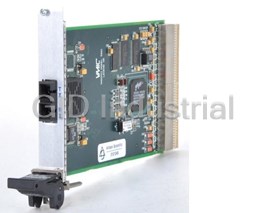
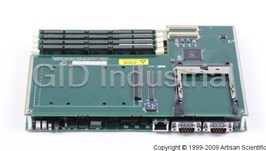
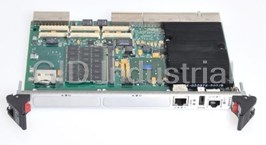
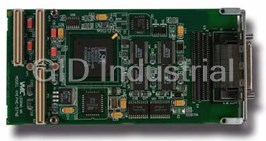
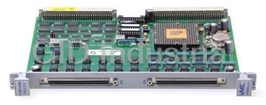
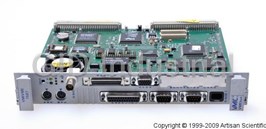




What they say about us
FANTASTIC RESOURCE
One of our top priorities is maintaining our business with precision, and we are constantly looking for affiliates that can help us achieve our goal. With the aid of GID Industrial, our obsolete product management has never been more efficient. They have been a great resource to our company, and have quickly become a go-to supplier on our list!
Bucher Emhart Glass
EXCELLENT SERVICE
With our strict fundamentals and high expectations, we were surprised when we came across GID Industrial and their competitive pricing. When we approached them with our issue, they were incredibly confident in being able to provide us with a seamless solution at the best price for us. GID Industrial quickly understood our needs and provided us with excellent service, as well as fully tested product to ensure what we received would be the right fit for our company.
Fuji
HARD TO FIND A BETTER PROVIDER
Our company provides services to aid in the manufacture of technological products, such as semiconductors and flat panel displays, and often searching for distributors of obsolete product we require can waste time and money. Finding GID Industrial proved to be a great asset to our company, with cost effective solutions and superior knowledge on all of their materials, it’d be hard to find a better provider of obsolete or hard to find products.
Applied Materials
CONSISTENTLY DELIVERS QUALITY SOLUTIONS
Over the years, the equipment used in our company becomes discontinued, but they’re still of great use to us and our customers. Once these products are no longer available through the manufacturer, finding a reliable, quick supplier is a necessity, and luckily for us, GID Industrial has provided the most trustworthy, quality solutions to our obsolete component needs.
Nidec Vamco
TERRIFIC RESOURCE
This company has been a terrific help to us (I work for Trican Well Service) in sourcing the Micron Ram Memory we needed for our Siemens computers. Great service! And great pricing! I know when the product is shipping and when it will arrive, all the way through the ordering process.
Trican Well Service
GO TO SOURCE
When I can't find an obsolete part, I first call GID and they'll come up with my parts every time. Great customer service and follow up as well. Scott emails me from time to time to touch base and see if we're having trouble finding something.....which is often with our 25 yr old equipment.
ConAgra Foods